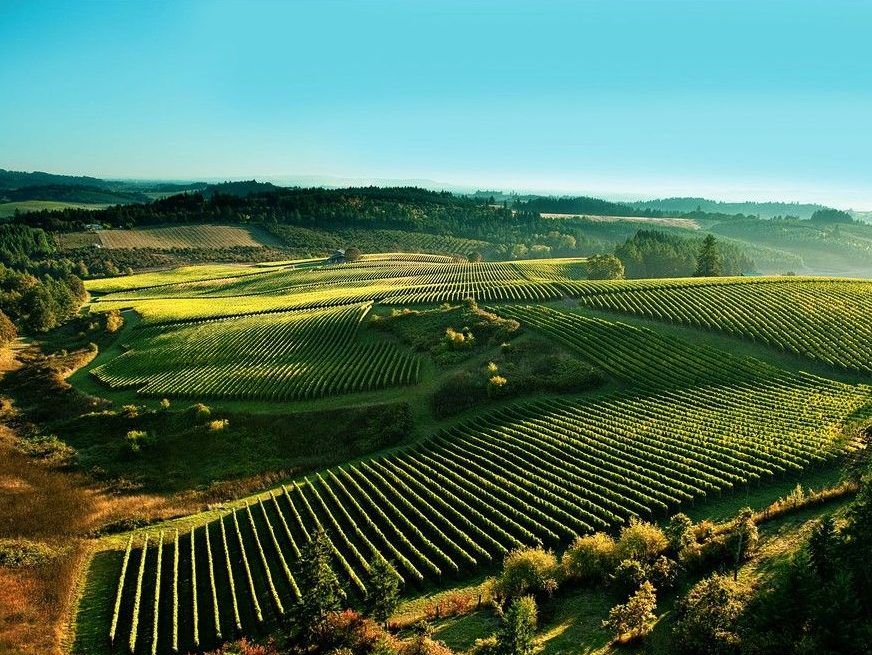
For a start, I suggest you put some Marvin Gaye on the music player before you continue this column. The first time I read about a wine being referred to as “sexy” was in the Wine Advocate, the publication created by American wine critic Robert Parker. I thought it was a goofy descriptor at the time, it wasn’t People Magazine’s Sexiest Wine of the Year after all, it’s just wine. That was about 25 years ago, and I’ve seen it used many times since, and yes, I’ve used it on occasion, typically when I’m talking about a good bottle of pinot noir. If, by sexy, it means the wine has allure and a beguiling charm, stimulates good conversation and is at its best in the company of good food, then sexy it is.
I’ve written about the wine many times over the years, usually in the context of Burgundian examples, and typically bemoaning how expensive my pinot noir habit is. The curse is that the grape only does well in a few select locations around the world outside of its native Burgundy, and that is the focus of this column.
For the record, there are four major regions outside of Burgundy delivering serious examples of pinot, with a few exceptions here and there. Oregon (first and foremost), the Sonoma Valley (California), Germany, and New Zealand. You can include Tasmania, the Mornington Peninsula (Australia) and the Okanagan Valley in the mix as well, along with a ragtag assortment of successful one-offs in places like Patagonia, Spain, and undoubtedly a few I’m unaware of. The grape is fickle to be sure, perhaps that comes from being sexy. It doesn’t like it too hot, too wet, too dry and requires very specific soils (most notably with limestone) and clonal selection. It also requires the skills of a talented winemaker to create a cohesive melange of all these elements and transform them into a thing of beauty. Many have tried and failed despite favourable conditions, only to realize they should have stuck to Cabernet Sauvignon and Chardonnay.
Oregon has hitched its wagon securely to pinot noir and stylistically their wines walk the line between Burgundy and California, in some ways offering the best of both worlds. Pioneers like Ken Wright recognized the potential for the grape to thrive there decades ago and his wines, while not inexpensive, will give much pricier Burgundian examples a run for the money, and he’s not alone. Shea, Illahe, Thomas, Drouhin (based in Burgundy), and Cristom are great examples of the heights the grape can climb to in the state. The Willamette Valley is ground zero for pinot noir, yet the region still feels sleepy and somewhat resistant to the tourism that great wine regions tend to draw. They do hold a remarkable event each July, however. The IPNC (International Pinot Noir Conference) draws a global crowd, both in terms of producers and attendees. It runs in McMinnville on the last weekend of every July, and the events are all outside, including the dinners included in the package. It was so popular in the early stages that tickets were by lottery only, including wine journalists if you can imagine such a thing. I’ve been several times and can honestly say it’s one of the great wine weekends on the planet, highly recommended.
It still surprises many wine lovers to discover that Germany is now the third-largest pinot noir producer in the world. Global warming has been kind to varietal in their key wine regions and the best examples from producers like Jean Stodden (not yet available in Alberta, nudge nudge), Wasenhaus, Friedrich Becker, Johannes Selbach and August Kesseler have all demonstrated that the grape is destined for greatness in German wine regions. Their wines are in a decidedly Burgundian style, which makes sense considering soil and climatic conditions.
Moving back to the new world, California cannot be overlooked, most notably in Sonoma. Very few of these wines would be mistaken for Burgundy but that doesn’t mean they don’t have their own appeal. The best ones, from producers like Dumol, Radio Coteau, Hirsch Vineyards and Littorai display an amazing concentration of lush, silk fruit but with enough acidity from the cooling Pacific waters to keep the wines in balance.
In somewhat unlikelier regions, Australia offers the pinots from Tasmania and the Mornington Peninsula. Montalto is now available here and this Mornington Peninsula winery is making wines reminiscent of the Oregon style (and well-priced) while Tasmania has demonstrated that they have more to offer than rabbit-terrorizing devils. These wines can be elusive, but you can find Dalrymple and Tolpuddle here, both are exceptional and fall into the Burgundian style.
Chile is not a pinot destination but check out the wines from Clos des Fous. Their Subsollum and Pour Ma Guele pinot noirs are excellent and very reasonably priced, by pinot noir standards.
Want to put some sexy in your wine-drinking habits? Try exploring the global pinot noir scene. Yeah, baby.
Geoff Last is a long-time Calgary wine merchant writer, instructor, and broadcaster. He can be heard every Friday on CJSW’s Road Pops program between 4 -6 pm. He was awarded a fellowship at Napa Valley’s Symposium of Professional Wine Writers for articles that have appeared in this column. Media inquiries can be directed to lastcallforwine@gmail.com